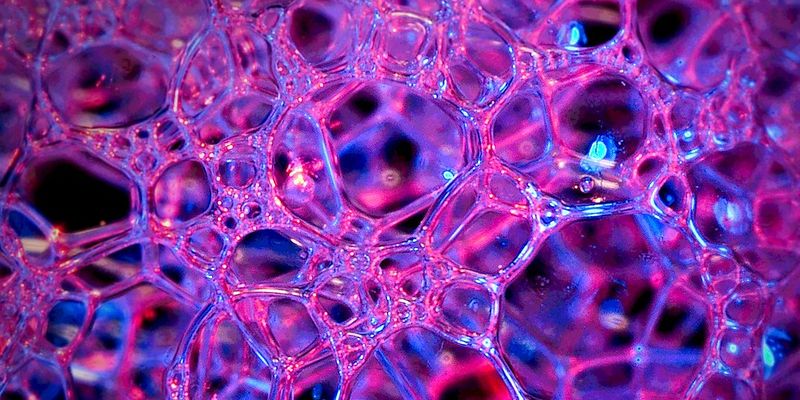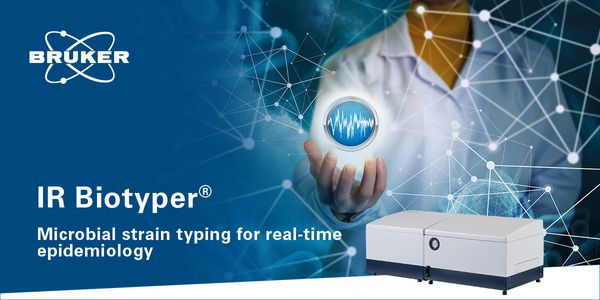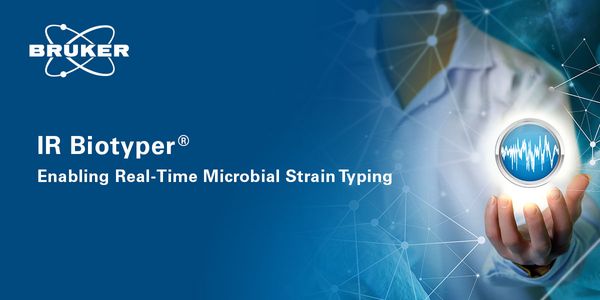Neural Network
Neural Network is a network or circuit of neurons, or in a modern sense, an artificial neural network that is composed of artificial neurons or nodes which are designed to recognize patterns.
-
MAR 08, 2023 | 9:00 AMArtificial neural networks can be useful for studying brain functions. In cognitive neuroscience, recurrent neural networks are often used to model cognitive functions. I will first offer my...MAR 08, 2023 | 8:30 AMIn this talk, we will discuss the nuts and bolts of the novel continuous-time neural network models: Liquid Time-Constant Networks (LTCs). Liquid neural networks are nonlinear state-space mo...Speaker: Mathias Lechner, PhD , Ramin Hasani, PhDPresented at: Neuroscience Virtual Event Series 2023
MAR 08, 2023 | 6:00 AMExplainable AI (XAI) aims at helping you understand and interpret predictions made by AI techniques and tools. Recently, there has been a growing interest in XAI as many users want explanati...MAR 08, 2023 | 6:00 AMSome of the earliest symptoms of Alzheimer’s disease (AD) are loss of orientation, wandering and misplacing items. One of the first regions vulnerable to AD pathology is the entorhinal...MAR 08, 2023 | 6:00 AMNeural networks are a powerful tool for modeling neural activity in the brain. In this talk, I will discuss how these models have helped in my own research and highlight recent work building...MAR 08, 2023 | 6:00 AMChildren efficiently develop their visual systems through learning from their environment. How this development unfolds in noisy real-world data streams remains largely unknown. Deep neural...OCT 25, 2022 | 11:00 AMDate: October 25, 2022 Time: 11:00am (PST), 2:00pm (EST), 8:00pm (CEST) Candida auris is a multi-drug resistant yeast that continues to be a global threat for infection and transmission in h...JUL 14, 2022 | 8:00 AMDate: July 14, 2022 Time: 8:00am (PDT), 11:00am (EDT), 5:00pm (CEST) Sensory perception is modulated in a top-down fashion by higher brain regions to regulate behavioral responses. In olfact...Speaker: Prof. Ulrich Kubitscheck , Dr. Martin Schwarz , Juan RodríguezSponsored By: Miltenyi BiotecMAR 10, 2022 | 11:55 PMBehavior in complex environments requires decisions that flexibly combine stimulus representations with context, goals, and memory. Two key aspects of such cognitive flexibility are the retr...MAR 10, 2022 | 11:55 PMWe are in critical need of targeted and individualized treatments for mental health disorders, which affect nearly 50% of Americans during our lifetimes. Brain stimulation treatments, includ...OCT 26, 2021 | 6:00 AMDate: October 26, 2021 Time: 6:00am (PDT), 9:00am (EDT), 3:00pm (CEST) With the IR Biotyper®, Dr. Markus Meyer will introduce the audience into the world of FT-IR (Fourier Transform Infr...Speaker: Maria Pardos de la Gandara, MD, PhD , Markus Meyer, PhDSponsored By: Bruker Microbiology & Infection DiagnosticsAUG 25, 2021 | 10:30 AMIn 1910, Harrison published the first report of frog embryonic sympathetic ganglia grown in hanging drops of lymph for a few days, where single neurons extended nerve fibers with complex gro...Speaker: Erna van Niekerk, Ph.D.AUG 25, 2021 | 12:00 AMWe will show how to combine large scale neural recordings and mechanistic neural network models to advance our conceptual understanding of how neural circuits mediate cognitive functions lik...AUG 25, 2021 | 12:00 AMThreshold-linear networks (TLNs) display a wide variety of nonlinear dynamics including multistability, limit cycles, quasiperiodic attractors, and chaos. Over the past few years, we have de...AUG 25, 2021 | 12:00 AMTargeted stimulation of the brain has the potential to treat mental illnesses but designing an appropriate protocol requires a multitude of choices. I will describe an approach to help desig...AUG 25, 2021 | 12:00 AMRecent advances in machine learning have shown that deep neural networks (DNNs) can provide powerful and flexible models of neural sensory processing. In the auditory system, standard linear...AUG 25, 2021 | 12:00 AMOne role of theory is in guiding future experiments: What should we aim to measure? Which experimental results should we be surprised about? I will argue here that simple random networks mod...APR 20, 2021 | 12:00 AMNanopore sequencing has enormous potential in epigenetic applications; unlike traditional sequencing-by-synthesis technologies, it can distinguish covalently modified nucleotides directly th...NOV 10, 2020 | 5:00 AMDate: November 10, 2020 Time: 5:00am (PST), 8:00am (EST), 2:00pm (CET) Dr. Stefan Zimmermann will talk about the use of Fourier Transform Infrared Spectroscopy for fast and reliable typing o...OCT 21, 2020 | 12:00 AMAs ‘omics research advances, separations data such as chromatograms and nuclear magnetic resonance (NMR) spectra are being used as direct inputs to machine-learning algorithms ranging...Speaker: Dr. David A. SheenSEP 08, 2020 | 11:00 PMOver the past five years there has been an explosion of research the deep learning field. Companies like Google, Facebook, and OpenAI have created neural networks that are significantly more...AUG 07, 2020 | 12:00 PMDuring this seminar I will present details of my path from Beckman Scholar to MD-PhD, advanced training as a neurologist, then a neurointensivist, and the interleaving of additional research...AUG 06, 2020 | 10:00 AMIn the adult mammalian hippocampus, neurogenesis (in which new neurons are generated and integrated into the CNS) is believed to underlie learning and memory. Within the hippocampus, numerou...MAR 11, 2020 | 3:00 PMIdentifying the diversity of neuronal cell types of the nervous system is one of the main objectives of the BRAIN Initiative, with the vision that distinct neuronal identities will allow for...Speaker: Giorgio Ascoli, PhD , Hong-Wei Dong, MD, PhD , Byungkook Lim, PhDPresented at: Neuroscience Virtual Event Series 2020
MAR 08, 2023 | 9:00 AM
Artificial neural networks can be useful for studying brain functions. In cognitive neuroscience, recurrent neural networks are often used to model cognitive functions. I will first offer my...
MAR 08, 2023 | 8:30 AM
In this talk, we will discuss the nuts and bolts of the novel continuous-time neural network models: Liquid Time-Constant Networks (LTCs). Liquid neural networks are nonlinear state-space mo...
Speaker:
Mathias Lechner, PhD
, Ramin Hasani, PhD
Presented at: Neuroscience Virtual Event Series 2023
MAR 08, 2023 | 6:00 AM
Explainable AI (XAI) aims at helping you understand and interpret predictions made by AI techniques and tools. Recently, there has been a growing interest in XAI as many users want explanati...
MAR 08, 2023 | 6:00 AM
Some of the earliest symptoms of Alzheimer’s disease (AD) are loss of orientation, wandering and misplacing items. One of the first regions vulnerable to AD pathology is the entorhinal...
MAR 08, 2023 | 6:00 AM
Neural networks are a powerful tool for modeling neural activity in the brain. In this talk, I will discuss how these models have helped in my own research and highlight recent work building...
MAR 08, 2023 | 6:00 AM
Children efficiently develop their visual systems through learning from their environment. How this development unfolds in noisy real-world data streams remains largely unknown. Deep neural...
OCT 25, 2022 | 11:00 AM
Date: October 25, 2022 Time: 11:00am (PST), 2:00pm (EST), 8:00pm (CEST) Candida auris is a multi-drug resistant yeast that continues to be a global threat for infection and transmission in h...
JUL 14, 2022 | 8:00 AM
Date: July 14, 2022 Time: 8:00am (PDT), 11:00am (EDT), 5:00pm (CEST) Sensory perception is modulated in a top-down fashion by higher brain regions to regulate behavioral responses. In olfact...
Speaker:
Prof. Ulrich Kubitscheck
, Dr. Martin Schwarz
, Juan Rodríguez
Sponsored By: Miltenyi Biotec
MAR 10, 2022 | 11:55 PM
Behavior in complex environments requires decisions that flexibly combine stimulus representations with context, goals, and memory. Two key aspects of such cognitive flexibility are the retr...
MAR 10, 2022 | 11:55 PM
We are in critical need of targeted and individualized treatments for mental health disorders, which affect nearly 50% of Americans during our lifetimes. Brain stimulation treatments, includ...
OCT 26, 2021 | 6:00 AM
Date: October 26, 2021 Time: 6:00am (PDT), 9:00am (EDT), 3:00pm (CEST) With the IR Biotyper®, Dr. Markus Meyer will introduce the audience into the world of FT-IR (Fourier Transform Infr...
Speaker:
Maria Pardos de la Gandara, MD, PhD
, Markus Meyer, PhD
Sponsored By: Bruker Microbiology & Infection Diagnostics
AUG 25, 2021 | 10:30 AM
In 1910, Harrison published the first report of frog embryonic sympathetic ganglia grown in hanging drops of lymph for a few days, where single neurons extended nerve fibers with complex gro...
Speaker:
Erna van Niekerk, Ph.D.
AUG 25, 2021 | 12:00 AM
We will show how to combine large scale neural recordings and mechanistic neural network models to advance our conceptual understanding of how neural circuits mediate cognitive functions lik...
AUG 25, 2021 | 12:00 AM
Threshold-linear networks (TLNs) display a wide variety of nonlinear dynamics including multistability, limit cycles, quasiperiodic attractors, and chaos. Over the past few years, we have de...
AUG 25, 2021 | 12:00 AM
Targeted stimulation of the brain has the potential to treat mental illnesses but designing an appropriate protocol requires a multitude of choices. I will describe an approach to help desig...
AUG 25, 2021 | 12:00 AM
Recent advances in machine learning have shown that deep neural networks (DNNs) can provide powerful and flexible models of neural sensory processing. In the auditory system, standard linear...
AUG 25, 2021 | 12:00 AM
One role of theory is in guiding future experiments: What should we aim to measure? Which experimental results should we be surprised about? I will argue here that simple random networks mod...
APR 20, 2021 | 12:00 AM
Nanopore sequencing has enormous potential in epigenetic applications; unlike traditional sequencing-by-synthesis technologies, it can distinguish covalently modified nucleotides directly th...
NOV 10, 2020 | 5:00 AM
Date: November 10, 2020 Time: 5:00am (PST), 8:00am (EST), 2:00pm (CET) Dr. Stefan Zimmermann will talk about the use of Fourier Transform Infrared Spectroscopy for fast and reliable typing o...
OCT 21, 2020 | 12:00 AM
As ‘omics research advances, separations data such as chromatograms and nuclear magnetic resonance (NMR) spectra are being used as direct inputs to machine-learning algorithms ranging...
Speaker:
Dr. David A. Sheen
SEP 08, 2020 | 11:00 PM
Over the past five years there has been an explosion of research the deep learning field. Companies like Google, Facebook, and OpenAI have created neural networks that are significantly more...
AUG 07, 2020 | 12:00 PM
During this seminar I will present details of my path from Beckman Scholar to MD-PhD, advanced training as a neurologist, then a neurointensivist, and the interleaving of additional research...
AUG 06, 2020 | 10:00 AM
In the adult mammalian hippocampus, neurogenesis (in which new neurons are generated and integrated into the CNS) is believed to underlie learning and memory. Within the hippocampus, numerou...
MAR 11, 2020 | 3:00 PM
Identifying the diversity of neuronal cell types of the nervous system is one of the main objectives of the BRAIN Initiative, with the vision that distinct neuronal identities will allow for...
Speaker:
Giorgio Ascoli, PhD
, Hong-Wei Dong, MD, PhD
, Byungkook Lim, PhD
Presented at: Neuroscience Virtual Event Series 2020
























